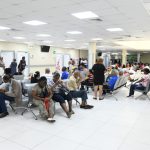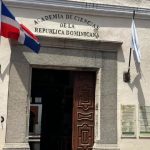IOM monitors migrant flows on Haiti-Dominican Republic border

Haiti – IOM is continuing to monitor migrant flows onthe border between Haiti and the Dominican Republic. The monitoring started on17 June, following the expiration of the registration component of the NationalPlan for the Regularization of Foreigners (PNRE in Spanish) in the DominicanRepublic.
Dominican authorities reported on 6 August that over66,000 Haitian migrants have spontaneously returned to their country of origin;many used free transportation provided by the Dominican authorities.
Between 16 June and 6 August 2015, IOM field teamsinterviewed 1,659 families (4,628 individuals), who reported having recentlycrossed the border from the Dominican Republic into Haiti.
Some 81.2 per cent (3,758 people) said they hadspontaneously returned to Haiti, while 18.8 per cent (870 people) said thatthey had been forcibly returned by the authorities. Some 82.0 per cent (3,794individuals) did not have any type of documentation.
“We need further analysis of the data collected tounderstand which Dominican legal category these alleged forced returns fallunder,” said IOM Dominican Republic Chief of Mission Jorge Baca. “The Dominicanauthorities have assured IOM that deportations have not been resumed.”
Among the people crossing the border, IOM teams identified25 presumed unaccompanied children. These cases were referred to the relevantgovernment authorities for appropriate care and status determination.
In cooperation with UNHCR, UNICEF and OHCHR, IOM hastrained a network of 132 border enumerators on fundamentals of data collection,screening, detection and referral of specific protection cases. The majority ofthem have already been deployed to the field. This effort aims to increase thescope of data collection carried out so far, to ensure timely collection ofscreening forms at all border crossing points, both official and unofficial.
Since June, four spontaneous settlements have sprungup in the commune of Anse-à-Pitre, the southernmost of the four official bordercrossing points located across from the Dominican town of Pedernales. Thesesettlements lack most essential services and living conditions are harsh.
The first spontaneous settlements to emerge were Têteà l’Eau, which now hosts an estimated 102 families, and Parc Cadeau, currentlyhosting approximately 67 families. In recent weeks, two new settlements, knownas Fonds Jeannette and Savanne Galata, have sprung up in the area; theestimated populations have already reached 70 and 45 households, respectively.IOM staff are using drone-captured aerial images to monitor the evolution inthe number of makeshift shelters for each settlement.
In the locality of Fond Parisien, near the Malpasseborder, dozens of families returning from the Dominican Republic have beentemporarily hosted at the Fond Bayard School, where they are being assisted byJesuit Migrant Services and local organizations.
















